Town lease gives community more control on housing
Traditional Owners take control of the housing crisis in remote town of Gunyangara. Read their story.
Northern Territory
Don't miss out on the headlines from Northern Territory. Followed categories will be added to My News.
A REMOTE Territory community is on a mission to close the gap by tackling the inequities of housing.
In 2017 Gunyangara set a benchmark for town leases as the first Aboriginal Corporation, led by a board of Traditional Owners, to sign a 99-year-lease.
Under the Federal government’s Land Rights’ Act, the unprecedented contract meant Traditional Owners were able to make all decisions about development and enterprise on their land.
Now the small community in north-east Arnhem has taken control of housing governance, maintenance, design and build for all existing and new dwellings in the town.
Ngaarrariyal Aboriginal Corporation general manager Mathilde Payet-Vidalenc said having a town lease created meaningful advocacy between residents and government.
“There is a power imbalance when out-of-towners come in for an hour and just sit on a mat expecting our people to speak up,” she said.
“But when you have this conversation with the leaders in your community and then they have that conversation in a corporate environment with government, the power balance changes.”
She said the corporation had worked hard to ensure it could not only speak on behalf of the community but also provide data that backed up requests of the government.
Ms Payet-Vidalenc said as a result Gunyangara was able to secure nine new home builds and 11 extensions as part of the Department of Territory Families, Housing and Communities remote housing programs.
This was in addition to the dwellings Gumatj Corporation had built and now owns in the township.
“We embarked on the process to employ locally to build our own homes - that could also house our workers – that empowered the community and created a visible sense of ownership.”
The innovative approach also included creating a township fund which garnered wages as rent and then redistributed them into maintenance and development programs.
While Gumajt Elders are working to not only improve housing but also education and economic sustainability in their town, they realise their solution is not homogenous.
“We are lucky to have leaders and a corporation that has been strongly influencing government for decades, but other communities for many reasons don’t have that privilege.”
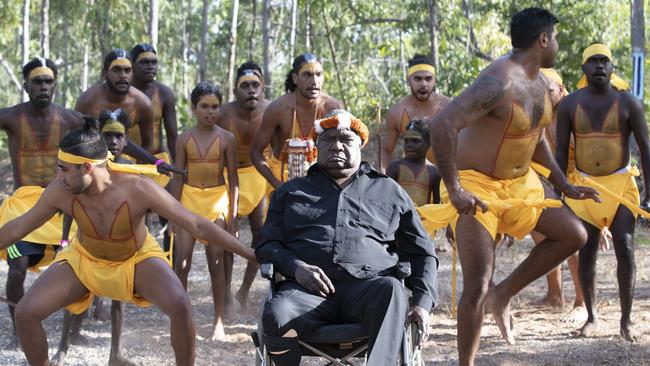
Spearheaded by Gumatj clan leader Galarrwuy Yunupingu it took a decade for the Gunyangara town lease to be signed but it has now set a precedent for Aboriginal communities.
At the signing Mr Yunupingu said it was an important milestone for future which would build wealth and economic development for his people.
Under the recent amendments to the Land Rights’ Act communities are able to easily apply for town leases that replicate Gunyangara.
The Department of Territory Families, Housing and Communities declined to comment on whether it supported town leases.
However Department of Infrastructure, Planning and Logistics said where a township lease is signed, the department’s interest are maintained by the commencement of a sublease.
UNCLE NORMAN JAPHRRULA FRANK
POWER poverty is killing remote communities according to one Traditional Owner.
“Dirty and expensive power is killing my people,” said Uncle Norman Japhrrula Frank.
“Houses out here are hot and humid and make my people sick.”
The Warumungu Traditional Owner said everyone in his Tennant Creek community was regularly impacted by expensive power bills and cuts. As a result, Mr Frank has called for wide-spread installation of solar power in remote communities, which he said would address many of the underlying health inequities for Aboriginal people.
As part of a joint initiative between Traditional Owners, Jacana Power and Original Power, which formed the First Nations Clean Energy Network, Mr Frank’s home had solar energy installed which slashed his power bill by almost 75 per cent.
“I used to be putting sometimes $100 a week on my power, but it’s slower these days, maybe about $50 per fortnight,” he said.
“This is a big issue out here. Everyone in my community is always thinking about power, asking for money for power, putting money on power cards because they’ve all had their power cut at sometime.”
The network wants to harness Australia’s renewable energy market through Indigenous-led projects.
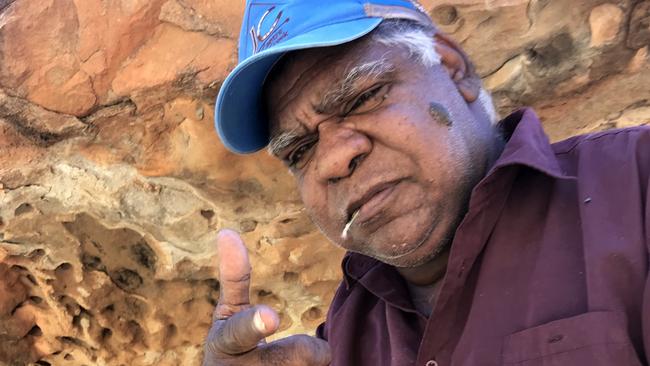
Mr Frank lives in a state housing, owned by the Department of Territory Families, Housing and Communities.
“I live in a brick house now, one of them good ones but some mob still in them tin sheds,” he said.
“They got no power, no water and are very cold in winter and very hot in summer, its no good.”
The NT News has revealed shocking details of families living in substandard housing owned by the Territory Government, which experts have said exacerbates power insecurities.
However, in April this year the Northern Territory Government announced it would invest $2m before 2025 in delivering clean and reliable electricity to remote communities.
Including developing a framework for up to 400m in private investment in new remote power systems and services.
The framework aligns with the recommendations of the Territory Economic Reconstruction to transition remote power systems for 72 remote communities by 2030.
However missing from that figure is the 52 outstations which primarily house Aboriginal people.
Currently, most remote communities rely on diesel fuel which is both costly and difficult to transport during the wet season.
CORALIE MOORE
RESIDENTS have abandoned the house. Between the rats eating pipes and the constant water damage Coralie Moore could no longer risk her own health while living in the Territory Housing-owned dwelling.
Ms Moore was diagnosed with Lupus, an auto-immune disease that disproportionately affects Aboriginal people in Australia, several years ago.
“I don’t like to complain. I try to fix things myself but after the rats and water damage, came the ants,” she said “They used to bite me in the night and it was very painful.”
After rain, water runs off the roof, down the tin exterior walls of the house and soaks through to the interior.
The cheap MDF pantry and wardrobes are now full of water rot.
Of the three bedrooms in the house two are significantly impacted by water damage, which Ms Moore said she had reported.
“They just come out patch the leak in one spot but it’s never done properly.” After months of trying to clear vermin and pests from the water-damaged house, Ms Moore and her daughter went to stay with family.

“I just needed a rest from trying to stay on top of everything, I am a very sick lady,” she said.
“But we will have to go back in a few weeks, because there is nowhere else for us to go.”
The NT News heard from several residents in the community similar claims around maintenance and witnessed water rot in seven different homes.
Ms Moore was not the only person to move from her Territory Housing-owned dwelling, however because of tenancy agreements, which explicitly prohibit people living in Territory Homes without declaring it to the department, residents asked to not be named.
Aboriginal Medical Alliance Services NT chief executive John Paterson said the issue of repairs and maintenance was a big a problem.
“There is strong evidence showing that a properly designed maintenance program will bring about huge health improvements for people in remote communities,” he said.
The Department of Territory Housing, Families and Communities refused to comment on the issues around the home, citing departmental policy not to report on specific cases.
ANNE-MARIE LEE
BUILT just over a year ago, the single women’s block in Barunga has already been inundated by flooding because of burst water mains.
Housing predominantly the community’s olgaman (old women), the new houses are designed for only one person.
For Anne-Marie Lee, the relief of having a new home was overwhelming but since moving in the design and craftsmanship has created myriad issues, she says.
“We had only just moved in here and the water main next door burst in the roof,” she said.
“It all pooled in the ceiling and then started leaking down my wall.”
Ms Lee said the yards of the block had also flooded, which the Department of Families, Housing and Community were told would happen. “We told them (it flooded) when they said they wanted to build these houses here,” she said.
The newer houses across from the women’s block are on stilts to allow for water to run under the dwellings.
“Why didn’t they build our places like that? Instead we have old people walking through a flooded yard every wet season just to get out,” she said.
Ms Lee said the front garden of her home was also full of cement from previous homes’ foundations, which were not properly excavated before the new build.
“What am I meant to grow here? I want to be proud of this house, I want to sit in my garden and play on the grass with my grandkids,” she said.
“I can’t do any of that.”

A department spokeswoman said it had built 19 new homes in Barunga and had prepared a further 10 lots for new builds in coming years.
The 10 new lots sit behind Ms Lee’s home, which she said was a flood zone.
“They come out here and consult with us but they never really listen,” Ms Lee said. “Would they live like this? Would they raise their children in these homes, no way they would – why should we?”
Aboriginal health and government leaders have attributed systemic maintenance issues to initial poor design and poor upkeep over several decades.
A Northern Land Council spokesman said that while Territory Housing design and quality had improved in recent years, there was more that needed to be done.
“A lot of remote housing is affected by poor initial design and build quality, inadequate maintenance and overcrowding due to a failure to provide enough housing stock,” the spokesman said.
“Public housing in remote communities would be improved by better consultation with, and design input from, Aboriginal representatives, peak bodies, and with local communities for all new housing and the refurbishment of existing housing.”
The department’s annual report suggests it has spent a significant proportion of funds on consulting with communities.
The NT News sent the department questions about specific Barunga homes but a spokeswoman said they were unable to comment on individual tenanted homes.
She said the department had received no maintenance requests for flooding during seasonal rains in 2020.
LARISA LEE
THE foundations are slowly sinking. After years of flooding Larisa Lee’s asbestos filled home is beginning to move.
The Department of Territory Housing owned dwelling is slowly shifting below the earth. The house now appears to be on a slope. Inside the home the walls are cracked; water rot rolls over peeling paint.
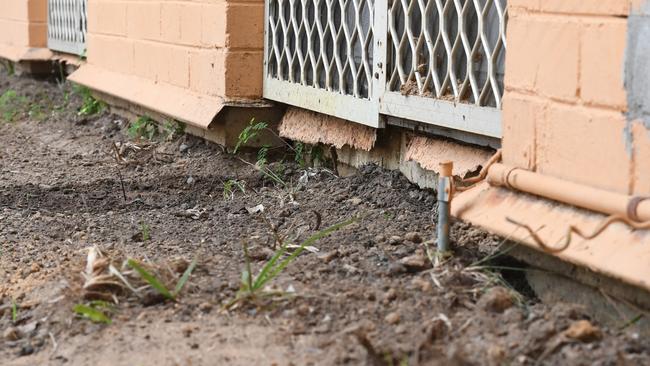
She lives in the house with her four young children, but it was previously her mother’s home. Ms Lee took over the lease four years ago and said it has flooded every year since.
“The rains come and the just come right on in; it once flooded twice in 24 hours,” she said.
“I dug out my own trenches this year but then maintenance contractors came and filled them in. I was a bit confused to be honest.”
Earlier this month, Territory’s Housings’ contractors attempted to build a deeper trench along the side of the house to encourage water to flow away from the home’s foundations.
In 2021, Ms Lee said a Territory Housing engineer assessed the home, however she has never seen the details of the report. As a result of yearly flooding the house has begun to shift and the walls inside have fractured.
“They told us the house has asbestos in the wall, and it becomes a risk when the walls crack or paint peels,” said Ms Lee.
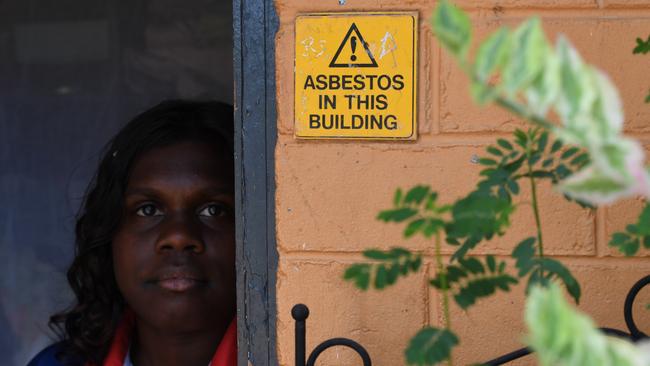
“The bathroom was renovated two years ago but because the of the water damage in the walls the faucets continually break and ants start coming out the taps.”
Ms Lee believes the house is over sixty years old, making it one of the oldest dwellings in the Barunga community.
“My Mum said this house was here when she was a kid,” said Ms Lee.
“It’s an old house and needs to be fixed up, but it is getting to the point you won’t be able to fix it.”
The NT News gave two Territory governments more than a week to answer questions regarding the number of remote houses that flood or contain asbestos but they did not provide the figures before deadline.
In response to questions the Department of Territory Families, Housing and Communities said individuals or families can report maintenance issues to their local housing office.
CHADWICK KOIMALA
IT feels hotter inside their home than outside.
In the remote community of Barunga, Chadwick Koimala and his family of 11 are crammed into a basic three-bedroom home.
Exposed wires are sticky taped on to the wall. The fans run noisily overhead but there is no airconditioning.
It is 40C outside, possibly hotter in the loungeroom, and Mr Koimala has a chronic heart condition.
Looking into his eyes it is easy to see he is sick. He says he lives with pain every day and has done so since he was a child.
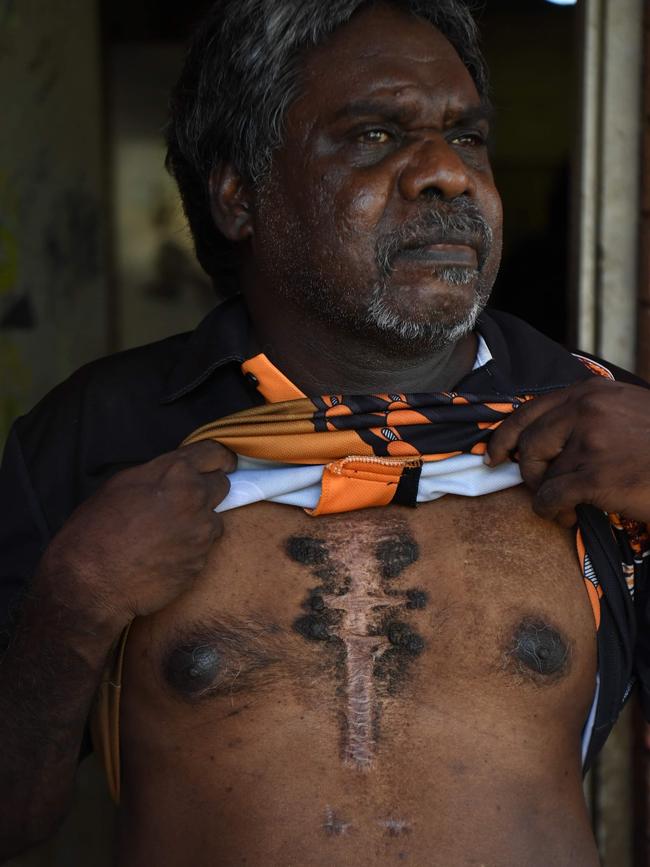
The school bus driver was diagnosed with rheumatic fever when he was only five years old, and subsequently heart disease, and since then has had a lifetime of surgeries, including heart valve replacements, a pacemaker implanted and a kidney removed.
“They tell me my heart will never be better, it just is,” Mr Koimala said.
His chronic disease has been linked to his housing circumstances.
But despite his declining condition, he has been denied a new home year-after-year.
“They keep telling us there are others with greater need, or sometimes they just don’t tell us anything at all,” he said.
“It is frustrating and upsetting, because we see who moves into these homes.
“I’ve been very sick for a long time.”
Mr Koimala’s cardiologist and Sunrise Aboriginal Health Corporation have written letters advocating on behalf of his family to be moved to a new home, which they say would mean everything.
The Department of Territory Families, Housing and Communities has earmarked his home for a renovation under its Room to Breathe project.
“A new bedroom would be nice, but there are still too many of us in this home,” Mr Koimala said.
A spokeswoman for Remote Housing Minister Chansey Paech said according to tenancy records, the house was not overcrowded.
She said tenants could report maintenance issues to their local housing maintenance officer.
The spokeswoman said 19 new homes had been built in Barunga, 12 new homes were planned and 13 existing homes would be extended and improved under the Room to Breathe program.
TAMNEE TIATI
THE flies have taken-up residence in the unused bathroom. It’s been a year since Tamnee Tiati and her family could shower in there.
The plumbing in the back half of their home is blocked as sewage spills out of the drains whenever someone uses the toilet or shower.
On a 40C day the smell is rancid and permeates Ms Tiati’s 16-year-old’s bedroom. Her youngest daughter, Thilia, is now living with their grandmother.
“I was scared this smell and shit would make her sick,” she said.
“My two older daughters developed rheumatic fever after we moved in here and we do our best but this plumbing isn’t safe for their hearts.”
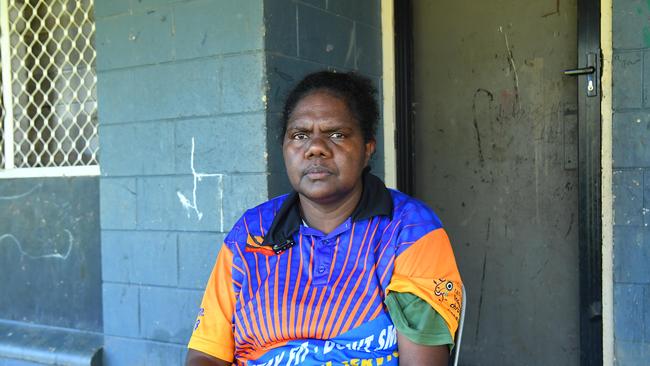
The family moved into the four-bedroom Territory-managed home seven years ago, and two of their daughters have since developed rheumatic fever heart disease, a chronic disease that attacks the heart valves.
Ms Tiati said she has sent videos and photographs to the Department of Housing trying to get the plumbing in her home fixed, but the situation has become so dire the family now go next-door to shower and use the toilet.
“The kids have to run across the lawn and over the fence in the night to my brother’s house just to go the toilet,” she said.
In addition to the bathroom plumbing problems, whenever the tap in the kitchen is turned on, a substantial leak in the pipes below the sink pours onto the floor.
“We put a bucket here ‘cause we have been waiting a while, but no one has come.” Ms Tiati said.
“We want to keep the house clean and dry for the kids so we just cook outside now and do the washing up at my brother’s house.”
Ms Tiati said the family spends most of their time on the front veranda where it is cooler, but with the coming flood season they will be forced inside.
“It floods all the way up to our door when the rains come. Last year we found a little baby crocodile swimming in the front yard,” she said.
“If the bathroom isn’t fixed soon the kids will have to run across the floods just to go to the toilet.”
A spokeswoman for Remote Housing Minister Chansey Paech said the repairs and maintenance contractor had been in contact with the tenants to manage the repairs and work had already occurred at the home.
JESSE AHFAT AND ALEISHA SCRUBBY
A FAMILY of seven in the remote community of Barunga, 80km from Katherine, are crammed into their living room.
The other rooms of the Territory government house are not inhabitable.
They are not alone, with many residents living in homes with burst pipes, constant flooding and exposed wiring as the smell of sewerage hangs in the hot air.
The Northern Territory is facing a remote housing crisis because of a large number of homes being in a severe state of disrepair.
The Department of Territory Families, Housing and Community own 71 houses in Barunga, yet residents have told the NT News maintenance requests are often ignored, which exacerbates the problem further.
For Jesse Ahfat and Aleisha Scrubby their Barunga house is alive with activity as their five children – three of their own and two others they look after – cram into the living room where they are forced to all sleep.
Their three bedroom home has been reduced to a lounge and kitchen due to water damage and exposed wiring throughout the house.
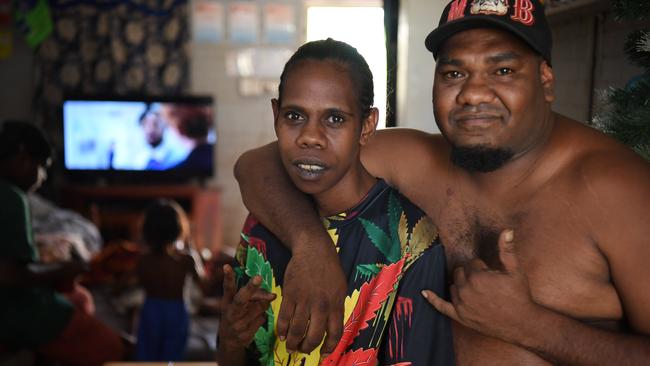
“The water smashes through the wall from the outside and drips down onto the stove, where we are trying to make meals for our family,” Mr Ahfat said.
“It’s a big hazard and we could easily get electrocuted.”
Each year the family is forced inside a mouldy home as the rains during the wet season slowly seep through the roofs, doors and walls.
Exposed wiring hangs from the ceilings and a faulty wire behind the stove means Mr Ahfat risks his own safety to “wriggle it” back in place whenever they prepare food.
“The house is just always wet. Always damp. Even when we leave all the doors open we can’t get the smell out of the house,” he said.
Mr Ahfat said the kids had been developing skin sores, which can lead to significant health conditions like rheumatic fever and chronic asthma, because of the damp environment,
The only bathroom in their home is constantly filling with mould because the house never dries out.
Mr Ahfat said the water never drained properly and it caused the kids to slip over and hurt themselves.
“Because the floor never dries out, the tiles are all lifting which cuts up our feet,” he said.
According to department, data almost 40 per cent of people in the community live in overcrowding but residents say that figure is far higher after many families moved out of uninhabitable homes.
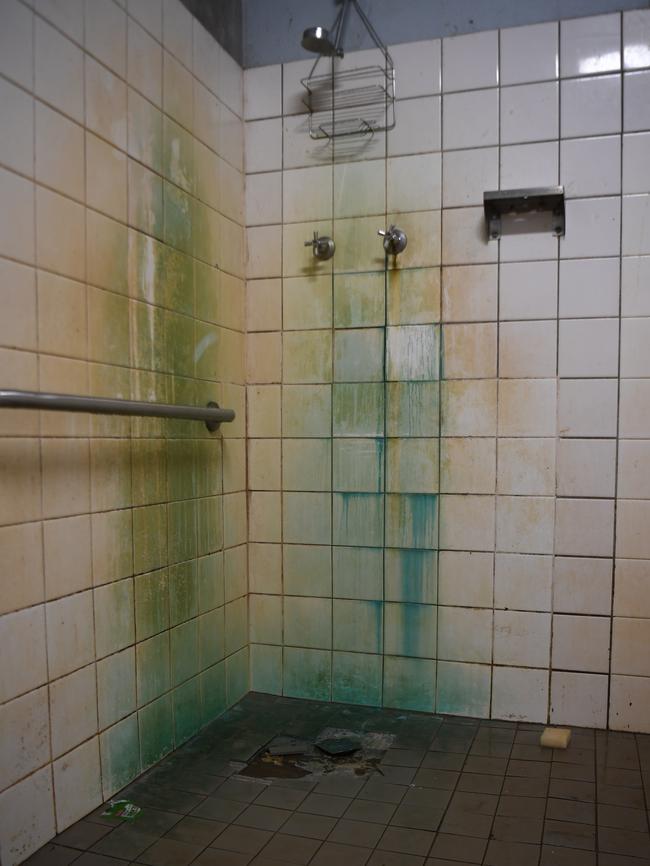
“Last time the plumber was here, he said all the pipes need replacing, just patching it here and there will just make more issues,” Mr Ahfat said.
“We try our best to work around it, and maintain it as best we can but it just always stinks because of the leaks.”
In Barunga, the national commitment to Closing The Gap seems invisible.
Aboriginal Medical Services Alliance NT chief executive John Paterson said the standard of living for many communities was unacceptable.
“Just because these are Aboriginal people doesn’t mean the government gets to keep treating them like second class citizens,” he said.
Statistics provided by the Department show the federal and territory governments have spent $6.9m on new housing in Barunga.
According to the same data there have been 19 new homes built including four single women’s houses. The single women’s houses flooded in the first year and a water main broke in the ceiling of two of them causing damage throughout.
The statistics also show 13 homes have been promised extensions under the “Room to Breathe” program but only $18,300 has been allocated in expenditure.




